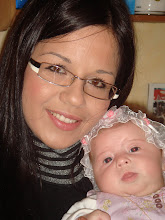Referencing
While completing written work at university you will make use of a variety of sources of information, including the work og other authors.
Original sources are:
1. be clear and explain about all your sources NEVER copy anything
2. do not copy whole sentences, phrases or paragraphs if you want to use them just replace some words with other or similar meaning.
(the most popular system of referencing)
1. Books
AUTHOR(S) (Year) Title, Edition. Place of publication, Publisher
Do not forget the title of book must be in italics such as the exaple above
e.g. Mandelbort, B.B. (1982) The Fractal Geometry of Nature. New York: WH Freeman
2. Books with two or three authors
e.g. LI, X. and CRANE, N.B. (1993) Electronic style: a guide to citing electronic information. London, Meckler.
3. Books with more than three authors Give the name of the first author, followed by ‘et al.’ (and others).
e.g. LEVITT, R. et al. (1999) The reorganised National Health Service. 6th ed. Cheltenham, Stanley Thornes.
4. Chapters in books
AUTHOR(S) (Year) Title of chapter. In: AUTHOR(S)/EDITOR(S) Book title. Place of publication, Publisher, Pages (p. or pp.).
e.g. TUCKMAN, A. (1999) Labour, skills and training. In: LEVITT, R. et al. The reorganised National Health Service. 6th ed. Cheltenham, Stanley Thornes, pp. 135-155.
5. Electronic information Electronic references should contain the following elements:
AUTHOR(S) (Year) Title of document [Type of resource, e.g. CD-ROM, e-mail, WWW] Organisation responsible (optional). Available from: URL address. [Date accessed].
e.g . UNIVERSITY OF SHEFFIELD LIBRARY (2001) Citing electronic sources of information [WWW] Sheffield, University of Sheffield. Available from: http://www.shef.ac.uk/library/libdocs/hsl- dvc2.html [Accessed 6/8/03].
6. If you are referencing an item, such as a journal article, use the normal format for that item then add the type of resource, URL and accessed details, as for electronic information.
e.g. DREXHAGE, J. (2004) Still up in the air. Carbon finance, January, pp 16-17 [WWW] Available from: http://www.iisd.org/pdf/2004/climate_still_up_air.pdf [Accessed 12/2/04].
The most common type of reference are these which mentioned above, although sometimes we use and some of these which mentioned below, so you can see how you can write these references.
7. Exhibition catalogues
ARTIST (Year) Title of exhibition [Exhibition catalogue] Place of publication, Publisher.
e.g. HARRIS, W. (1983) William Harris as designer [Catalogue of an exhibition held at the Whitworth Art Gallery, 3 May – 4 June 1983] London, Arts Council.
8. Journal articles
AUTHOR(S) (Year) Title of article. Title of journal, Vol. no. (Part no.), Pages (p. or pp.).
e.g. LU, H., and MIETHE, T.D. (2002) Legal representation and criminal processing in China. British journal of criminology, 42 (2), pp. 267-280.
9. Media (video, film, or broadcast) Title (Year) Type of media. ORIGINATOR (e.g. director). Place of production, Producer.
e.g. Rebel without a cause. (1983) Film. Directed by Nicholas RAY. USA, Warner Bros. A television broadcast should also include the date and time of broadcast, where possible. e.g. Dyslexic children. (1999) TV. Channel 4, July 29, 1900 hrs.
10. Newspaper articles
AUTHOR(S) (Year) Article title. Newspaper title, Day, Month (abbreviated), Page(s).
e.g. BROWN, P. (2002) New foot and mouth outbreak suspected. Guardian, 27 Feb., p. 1.
11. Online images Description or title of image (Year) [Online image] ORIGINATOR (if relevant). Available from: URL address. [Date accessed].
e.g. Hubble space telescope release in the space shuttle’s payload bay (1994) [Online image] Available from: http://explorer.arc.nasa.gov/pub/SPACE/GIF/s31-04-015.gif [Accessed 1/10/ 96].
12. Papers in conference proceedings
AUTHOR(S) (Year) Title. In: EDITOR(S) Title of conference proceedings. Place and date of conference (unless included in title). Place of publication, Publisher, Page(s).
e.g. GIBSON, E.J. (1977) The performance concept in building. In: Proceedings of the 7th CIB Triennial Congress. Edinburgh, September 1977. London, Construction Research International, pp. 129-136.
13. Publications from a corporate body (e.g. Government publications)
NAME OF ISSUING BODY (Year) Title. Place of publication, Publisher, Report no. (where relevant), Page(s).
e.g. DEPARTMENT OF THE ENVIRONMENT, Development Commission (1980) 38th Report. 1st April 1979 to 31st March 1980. London, HMSO, 1979-80 HC. 798, pp. 70-81.
14. Theses and dissertations
AUTHOR (Year) Title. Designation (Level, e.g. MSc., PhD.), Institution.
e.g. MARSHALL, J. (2002) The Manuscript tradition of Brunetto Latini’s "Tresor". Unpublished thesis (PhD), University of London.
Plagiarism
When you copy from the web or from any other type such as article, newspaper, book etc, something which someone else said is plagiarism, and it is unacceptable. So the best way to avoid the plagiarism is just to use the references or to rewrite with different words or you can use synonymous!
If you want some further information about references and plagiarism, you can visit these links:
http://libweb.anglia.ac.uk/referencing/files/Harvard_referencing.pdf
I done my self study with this site, so my reference is this site:
De Montford University, [August, 2008], ''The Harvard system of referencing'', [WWW]. Avaliable from: http://www.library.dmu.ac.uk/Images/Selfstudy/Harvard.pdf,
[Accessed, 20/11/2008]
Have a nice day!!!!!!!

